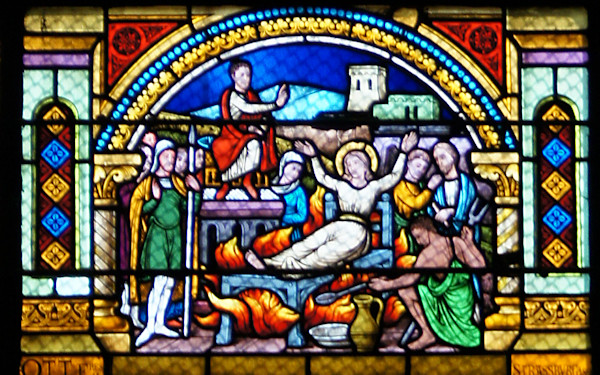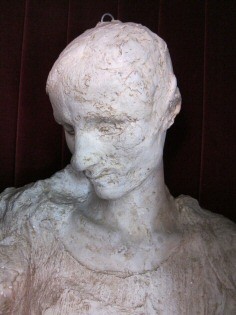In the 11th century Alsace was part of the Duchy of Swabia, divided into the Sundgau (Habsburg) and the Nordgau. Here the counts of Eguisheim ruled. Hildegard von Eguisheim married Friedrich von Büren around 1042 and thus also became the Palatine Countess of Breisgau and Countess in Riesgau. In 1087 this Hildegard of Büren brought the Benedictine monks from Conques in southern France to Sélestat (Schlettstadt) as atonement for a murder committed by her son Friedrich.
Die Mönche gründeten hier eine Filiale ihres Mutterklosters und liessen eine Kirche errichten, die der heiligen Fides (Sainte Foy) geweiht wurde.
The three-nave basilica is one of the most beautiful Romanesque churches in Alsace, even though its façade and interior have been altered several times over the centuries.
In the 17th century the church was baroqueised. At the end of the 19th century, an attempt was made to restore the original appearance of the church with style-cleaning restorations. The western towers were also "completed".
The apse and the striking 42 m high crossing tower
Lobby in the western front with lion portal.
The semi-columns to the left and right of the portal rest on lying lions.
In the tympanum Christ and symbols of the evangelists are depicted.
View into the interior of the Romanesque church. The pulpit remains from the baroque period.
The window in the choir represents Saint Fides. It dates back to the 19th century.

In the lower part of the window the martyrs of Saint Fides are depicted.
Statue of Saint Fides in the left side wing of the Eglise Sainte Foy


In the Humanist Library (Bibliothèque Humaniste) there is a model of the monastery, essentially the church of Sainte Foy with a cloister. In the place where the connection cloister church was, today stands a somewhat battered Nepomuk.
Historical information: Hildegard von Eguisheim (after Hildegard von Büren) was a step-niece of Emperor Konrad II and her ancestry goes back to Emperor Otto II; her uncle was Pope Leo IX.
Hildegard's son Friedrich (the old) is enfeoffed with the Duchy of Swabia by Emperor Heinrich IV as a thank you for his support in the bus journey to Canossa and married to his daughter Agnes. He founds the family of the Staufers. His son, Frederick the One-Eyed, is the father of Frederick Barbarossa.

IIn the anteroom of the museum "Bibliotheque Humaniste" the bust of a woman is exhibited, whose noble and serious face has a mysterious attraction. It is the authentic portrait of the dead of a noble lady from the Romanesque period. In 1890, this death mask was discovered during renovation work in the crypt of the Sainte Foy church. It is believed that the woman had died of the plague, and the dead woman was cast in lime for fear of infection. Thus the image of a person who lived more than 800 years ago was preserved until our time. The identity of the beauties is not completely clear.
This mask was found in the crypt exactly where the last resting place of the founder of the monastery Saint Foy - Hildegard von Büren (about 1028 - 1094) - should be.
Links to the holy Fides and their places of worship
